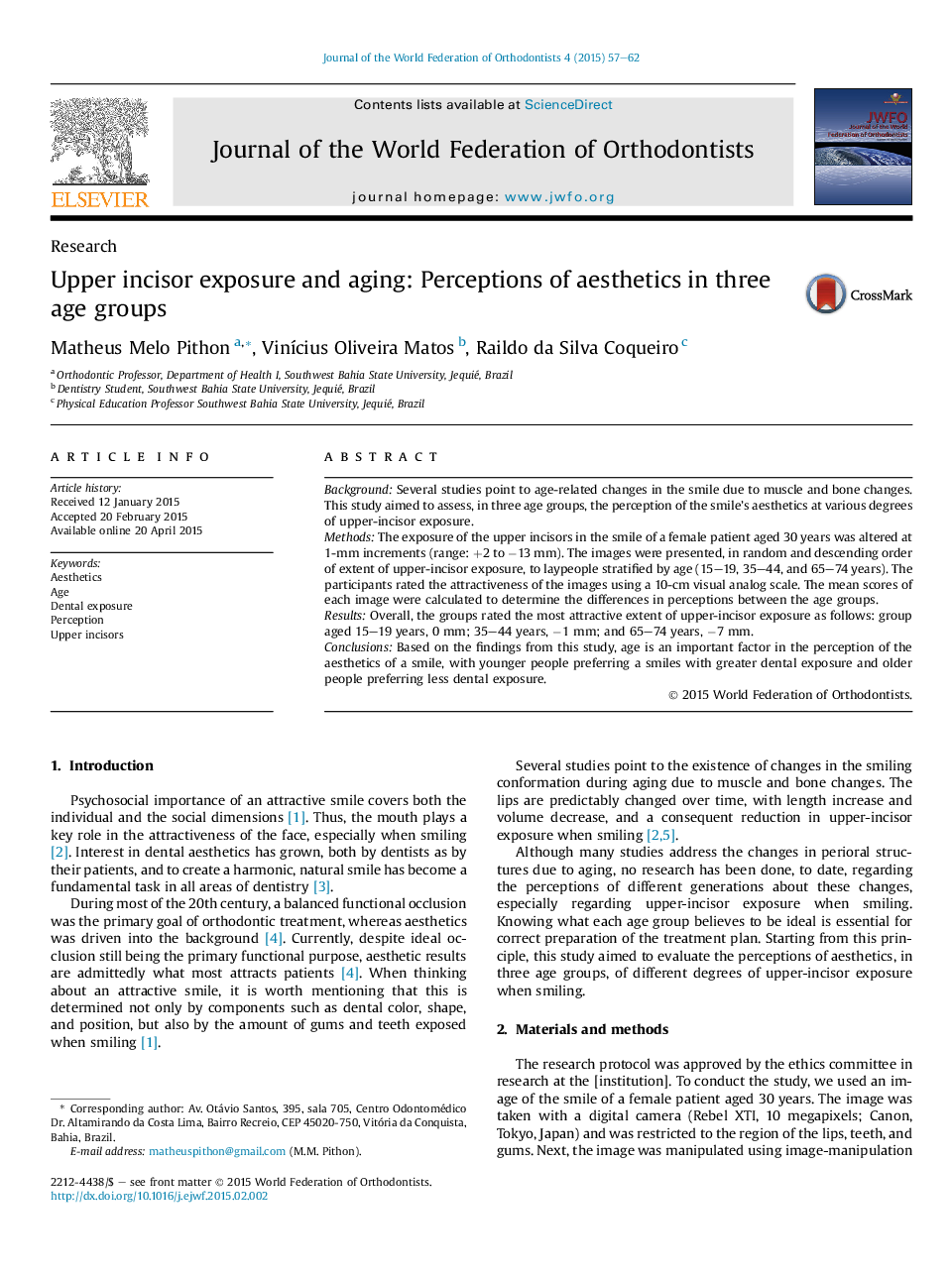| Article ID | Journal | Published Year | Pages | File Type |
|---|---|---|---|---|
| 3484909 | Journal of the World Federation of Orthodontists | 2015 | 6 Pages |
BackgroundSeveral studies point to age-related changes in the smile due to muscle and bone changes. This study aimed to assess, in three age groups, the perception of the smile's aesthetics at various degrees of upper-incisor exposure.MethodsThe exposure of the upper incisors in the smile of a female patient aged 30 years was altered at 1-mm increments (range: +2 to −13 mm). The images were presented, in random and descending order of extent of upper-incisor exposure, to laypeople stratified by age (15–19, 35–44, and 65–74 years). The participants rated the attractiveness of the images using a 10-cm visual analog scale. The mean scores of each image were calculated to determine the differences in perceptions between the age groups.ResultsOverall, the groups rated the most attractive extent of upper-incisor exposure as follows: group aged 15–19 years, 0 mm; 35–44 years, −1 mm; and 65–74 years, −7 mm.ConclusionsBased on the findings from this study, age is an important factor in the perception of the aesthetics of a smile, with younger people preferring a smiles with greater dental exposure and older people preferring less dental exposure.
